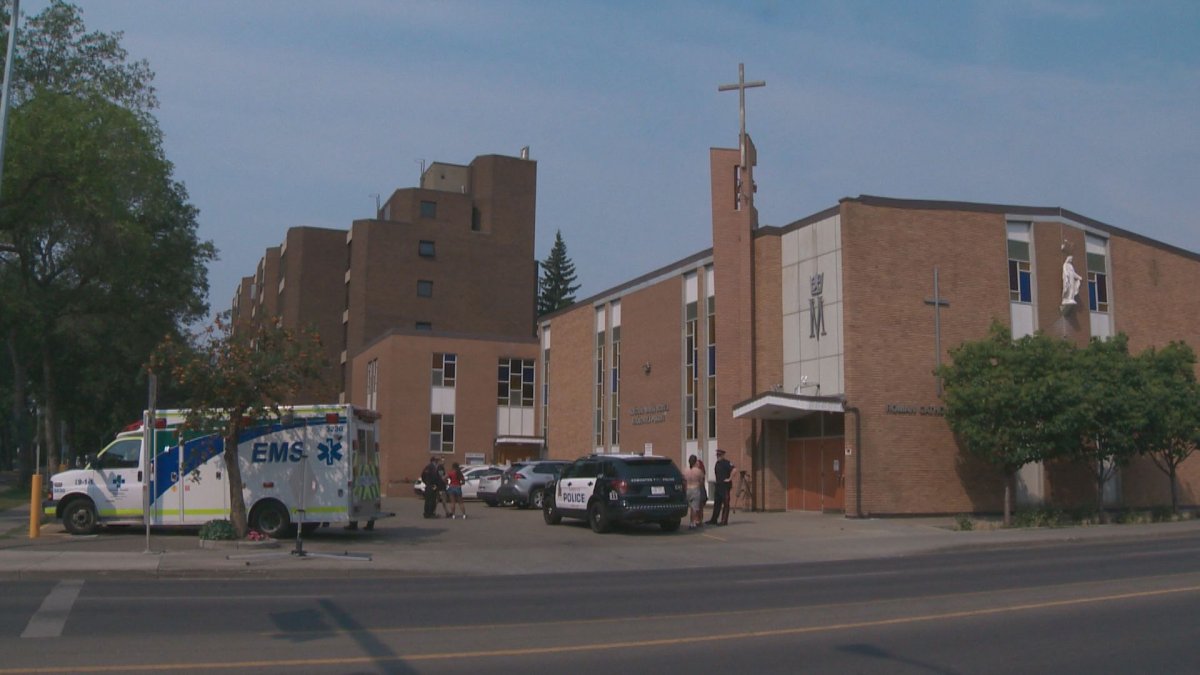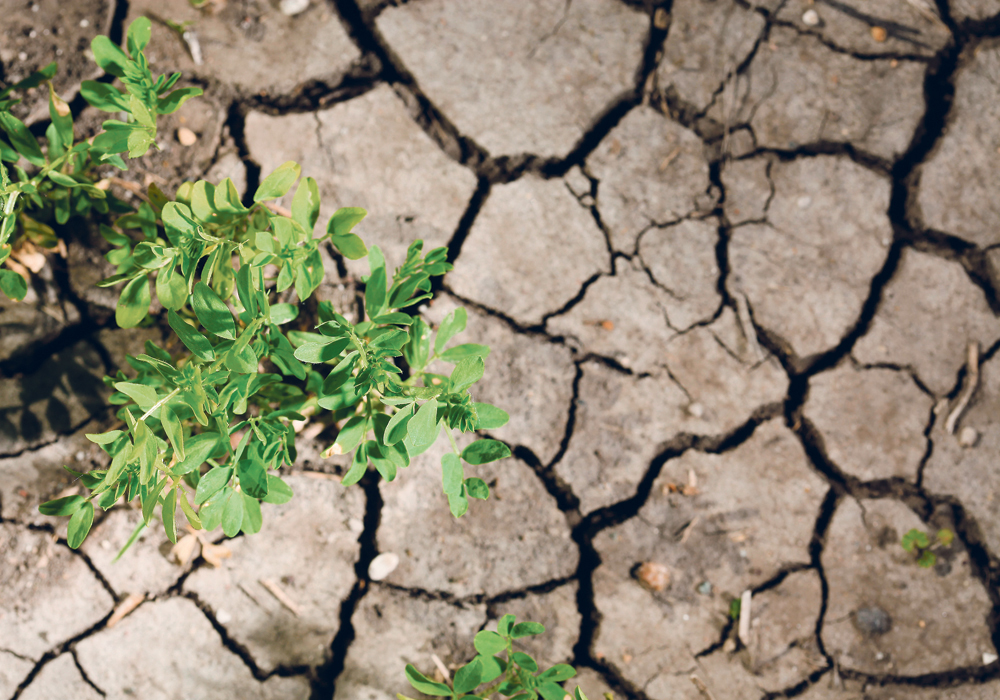Altercation occurs during protest outside Catholic church in Edmonton
Protestors gathered to rebuke Rev. Marcin Mironiuk’s denial of unmarked graves at former residential schools

A scuffle broke out at a church in Edmonton Sunday morning, while protesters gathered there in response to a Catholic priest denying the existence of unmarked burial sites on former residential school grounds.
Over the past several months, ground-penetrating radar scans have revealed thousands of remains on former residential school grounds.
Rev. Marcin Mironiuk, leader of Our Lady Queen of Poland Parish, referred to news of those unmarked burial sites as "lies" and "manipulation" in church on July 18 during and after masses. Video footage of his comments was posted to YouTube, but has since been deleted.
"We're here to tell the truth and we're here to hold him accountable. And we're here to let these people know we're not standing for this any longer," said Elder Taz Augustine, who organized a protest outside the church during mass Sunday morning.
Mironiuk apologized for his comments last week at the request of the Catholic Archdiocese of Edmonton. He has also been placed on indefinite leave.
But these actions are not enough to address the harm caused by Mironiuk's words, Augustine said.
"When I hear these people walking out of this church justifying his words and saying he's telling the truth, that we're the liars? No," she said.
"He is perpetuating lies. And that apology is not taking that away."
Protestors met with resistance at church
Tensions rose between parishioners and protestors outside the church.
Around 11 a.m., protestors tried walking into the church, and were met with resistance at the entrance. CBC News witnessed people inside the church pushing protestors out, which led to a scuffle where the protestors pushed back.
"Those people assaulted me on my land when I'm defending the children," Augustine told CBC News.
"This is the bull― that we've been putting up with on our land since these colonial people have come."

Protestors said they hoped to enter the church to respond to Mironiuk's statements and hear an apology in-person.
Edmonton police arrived on the scene after the altercation. No arrests were made.
The Catholic Archdiocese of Edmonton released Mironiuk's full apology Saturday, alongside a message from the Oblates Fathers of Assumption Province, his Polish superiors.
The statement apologizes for Mironiuk's actions, calling them "careless and improvised."
Mironiuk's full apology stated he will observe a memorial mass every month for the next year, specifically for children who died in residential schools.
The Truth and Reconciliation Commission identified over 3,200 people who died at residential schools in its 2015 report.
But records from those institutions are incomplete. An estimated 6,000 Indigenous children are believed to have died at residential schools.
THE RACISM IS STEEPED IN THE POST WW II POLISH CATHOLIC COMMUNITY IN CANADA MANY WITH TIES TO NAZI GERMANY AS GUEST ARBITER OR WHOSE PARENTS/GRANDPARENTS WERE GERMAN SPEAKING POLES AS THIS SOUTHSIDE COMMUNITY IS, I KNOW I LIVED IN THE HOOD THERE.
1 injured after Indigenous protest turns violent at Edmonton Catholic Church
A demonstration outside a Strathcona church in Edmonton turned violent Sunday morning.

A group of six First Nations demonstrators said they turned out to hear an apology from a priest at Our Lady Queen of Poland Catholic Church, located at 9906 83 Ave.
Elder Taz Augustine said they were there to hold the priest accountable for saying recently discovered unmarked Indigenous graves are a lie.
“We had a little demonstration, we had signs, and we were telling the congregation that their priest is a liar, so we brought out signs, and we brought out flags to honour the children of the unmarked graves so their voices can be heard.”
Augustine said things turned ugly when they tried to enter the church.
“We peacefully went into the front door, and when we entered into the front door, five or six men came running down the stairs and threw me against the wall and grappled with me and assaulted me,” she said.
“They grabbed the other people, and fists were flying, and they were throwing us out of the church and pushing us out of the church with their hands, and it was actually an assault on me and other people.”
Augustine said her arm was injured in the commotion.
Edmonton police are investigating but have not released information about charges.
Global News has reached out to church officials but calls have not been returned.
The group is planning another demonstration on Aug. 29 at St. Joseph’s Basilica.
“It just confirms to me that people need to understand that we are not going to shut up about this anymore,” she said.
“How do I feel about it? I’m even more pissed off. I’m even more incensed about this nonsense of people telling lies against the unmarked graves. I’m even more appalled that people who say they’re people of God are still attacking us and telling us we’re liars.”












